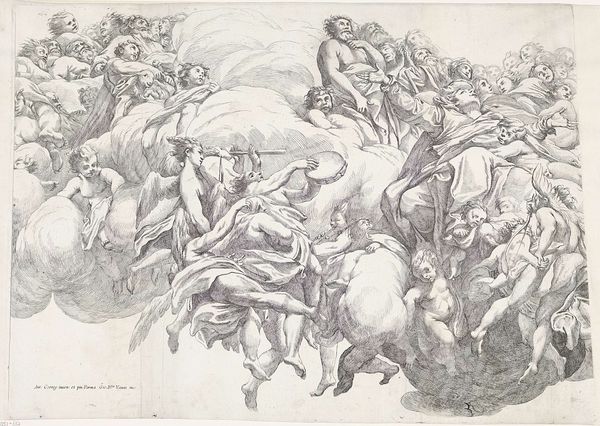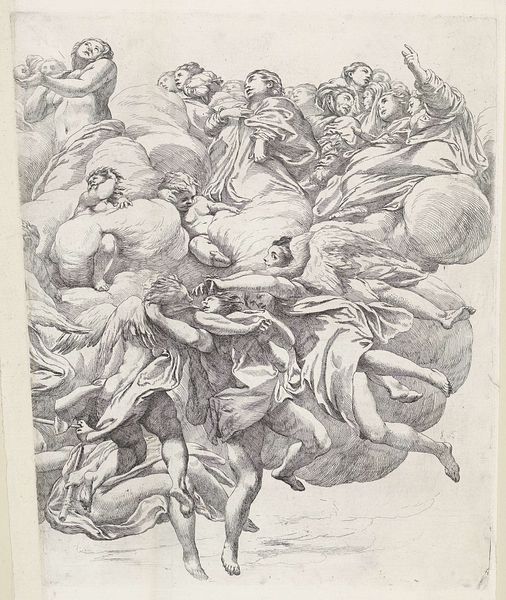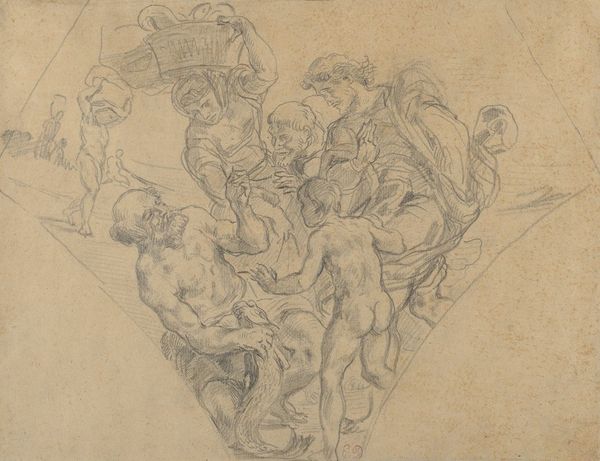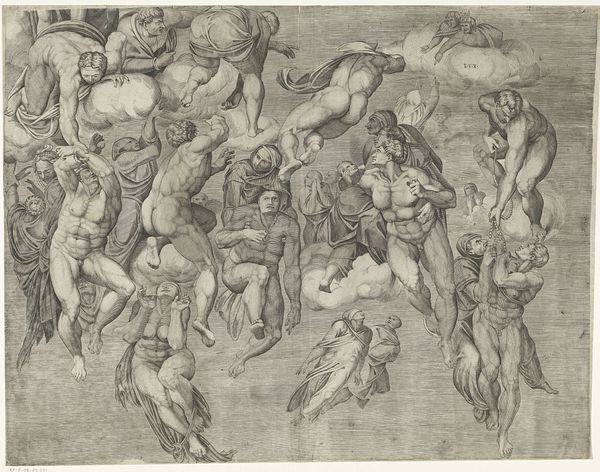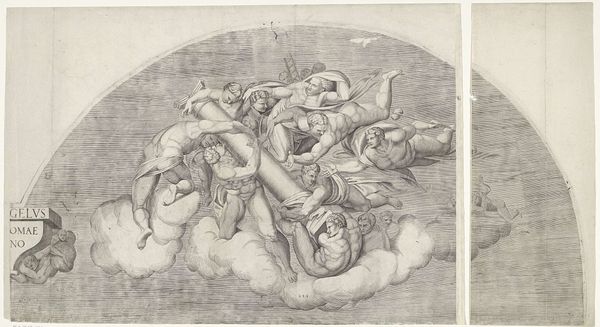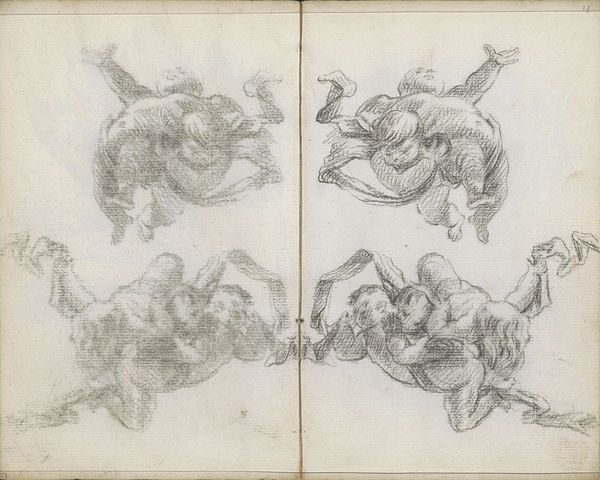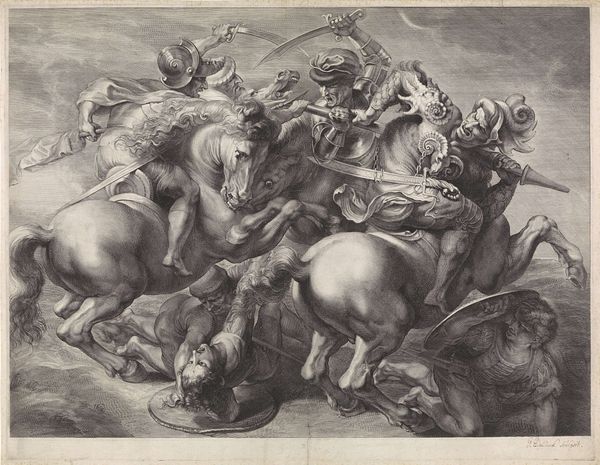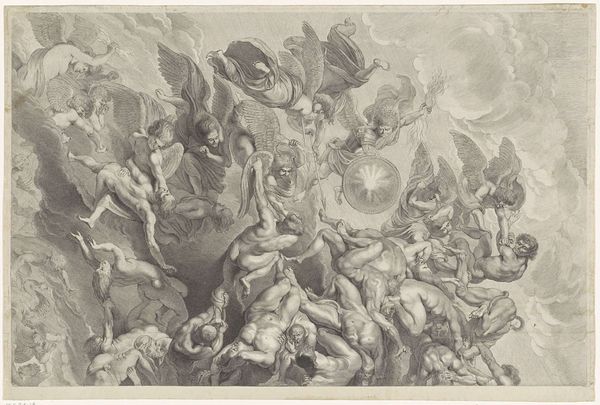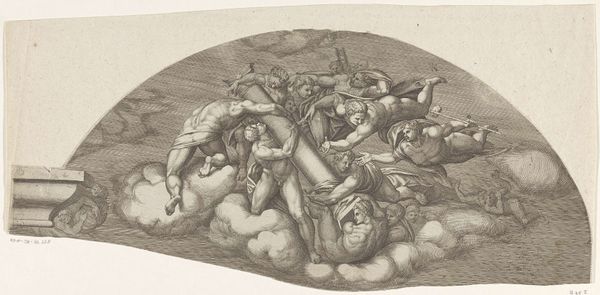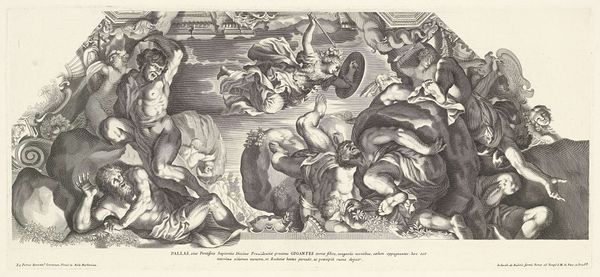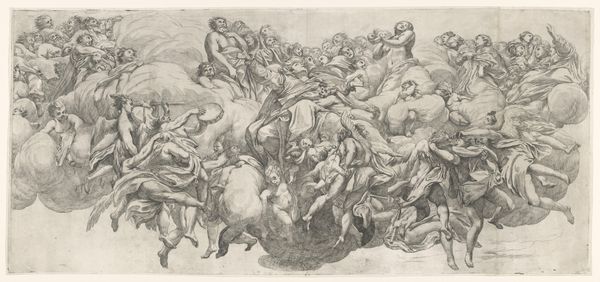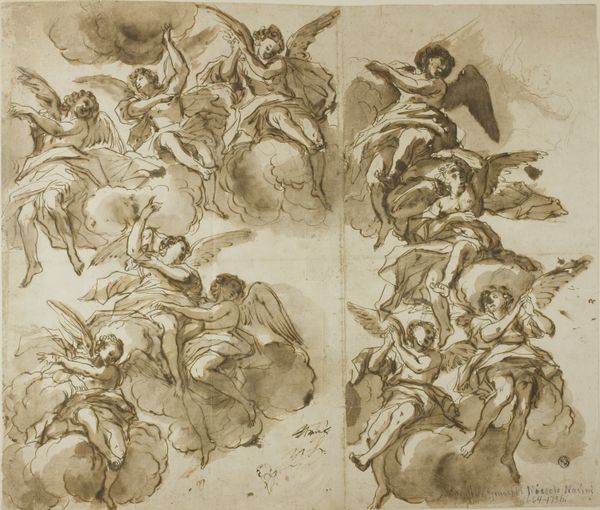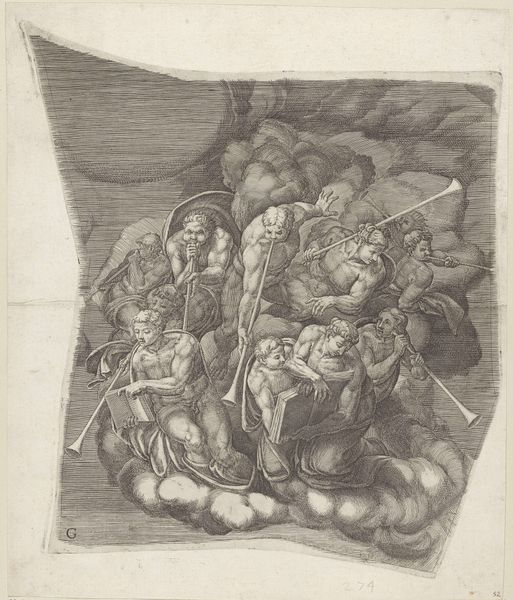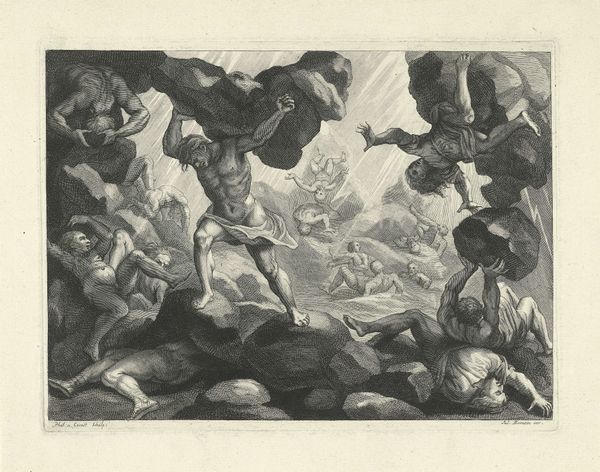
drawing, ink
#
drawing
#
allegory
#
baroque
#
pen sketch
#
figuration
#
ink
#
history-painting
Dimensions: height 401 mm, width 1444 mm
Copyright: Rijks Museum: Open Domain
Curator: Look at the sheer dynamism! It feels like a flurry of movement upwards. What do you make of this piece? Editor: The sense of ascension is palpable. This is "Hemelvaart van Maria," or "The Assumption of Mary," a pen and ink drawing made around 1642 by Giovanni Battista Vanni. I see the dramatic use of line and the intense composition – classic Baroque strategies. Curator: Baroque indeed! It's all swirling fabric and straining bodies, crafted on paper yet evoking a theatricality. What I find compelling is considering the socio-economic context. How might the accessibility of ink drawings versus large-scale paintings have shaped the distribution of such religious narratives at the time? How did Vanni operate within the workshop system, churning out these pieces? Editor: An interesting point. Formally, observe the artist’s use of chiaroscuro; the subtle tonal gradations create an ethereal effect, almost dissolving the figures into the heavens. Semiotically, consider the upward gaze, the outstretched arms... they all function as signifiers of religious devotion. Curator: Devotion tied intrinsically to artistic labor! Who paid for the ink? What was the paper made of? Was this preparatory sketch made for his consumption only, or was it produced for dissemination through a network of artisans and patrons, each adding to the work’s value and altering its message through production? These hands touching and moving it - they changed the original creation as a social matter. Editor: Undoubtedly, the materiality speaks, even screams, but consider Vanni’s artistic choices! He deftly employs foreshortening to amplify depth, guiding our eye to the central figure of Mary, bathed in an implied celestial light. Curator: The 'celestial light', as you term it, has as much to do with artistic vision as it does with the pigment available to Vanni and its distribution to those with sufficient money! This is as much about consumption and commodity exchange as it is devotion, after all. Editor: A persuasive claim. Ultimately, my eye is taken in by Vanni's mastery over composition in service to subject. The formal structures articulate his conceptual aims. Curator: And to recognize these artistic and devotional choices are always dependent on labor systems and access to commodities which make artworks available, understandable, and valued in distinct societies. That, for me, always bring depth into this history!
Comments
No comments
Be the first to comment and join the conversation on the ultimate creative platform.
